In this experiment, yttria-stabilized zirconia beads were used as the grinding media. A comparative study was conducted on zirconia beads with different diameters and zirconia beads with the same diameter but different masses, all from the same manufacturer.
Impact of Different Diameter Grinding Media on Ceramic Ink Performance
Under the same conditions of dispersant, solvent, and solid content, a comparative grinding experiment was conducted on zirconia beads with diameters of 0.3mm and 0.8mm, both from the same manufacturer. The study focused on analyzing the energy consumption and particle size distribution during the grinding process.
The grinding experiments were conducted using a Netzsch Labstar sand mill. The pigments used were standardized raw materials treated through air jet milling, with a standard experiment size of 2 kg. Particle size detection was performed to track ink particle size changes, ensuring that grinding did not adversely affect coloration, with a target D100=0.871μm. Figure 3-23 presents a comparison of particle size and energy consumption when grinding with 0.3mm and 0.8mm zirconia beads. Table 3-8 provides a comparison of ink particle size data after grinding with 0.3mm and 0.8mm zirconia beads. Figure 3-24 displays a comparison of ink particle size distribution for the two experimental groups. Figures 3-25 and 3-26 show the viscosity and surface tension changes of the ink after grinding with 0.3mm and 0.8mm zirconia beads, respectively. Figure 3-27 presents SEM images of the original pigment powder and the ink particles after grinding to D100=0.871μm using 0.3mm and 0.8mm zirconia beads. Table 3-9 and Figure 3-28 compare the colorimetric values and color charts for both experimental groups. Figure 3-23 demonstrates that, within the same grinding time, using 0.3mm zirconia beads consumes more energy compared to using 0.8mm zirconia beads. Additionally, ink particle sizes are smaller when using 0.3mm zirconia beads compared to 0.8mm zirconia beads. Particularly, after reaching ink particle size D100<1μm, the grinding efficiency with 0.8mm zirconia beads significantly lags behind that of 0.3mm zirconia beads. Grinding to D100=0.871μm with 0.3mm zirconia beads requires only 90 minutes and consumes 2 kW·h/kg, while achieving the same with 0.8mm zirconia beads takes 105 minutes and consumes 2.2 kW·h/kg. Moreover, comparing their post-grinding particle size curves, as shown in Table 3-8 and Figure 3-24, reveals that when the raw material's particle size is D100<10μm, using 0.3mm zirconia beads as grinding media yields higher grinding efficiency.
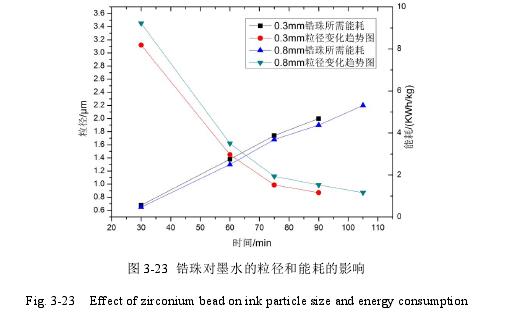
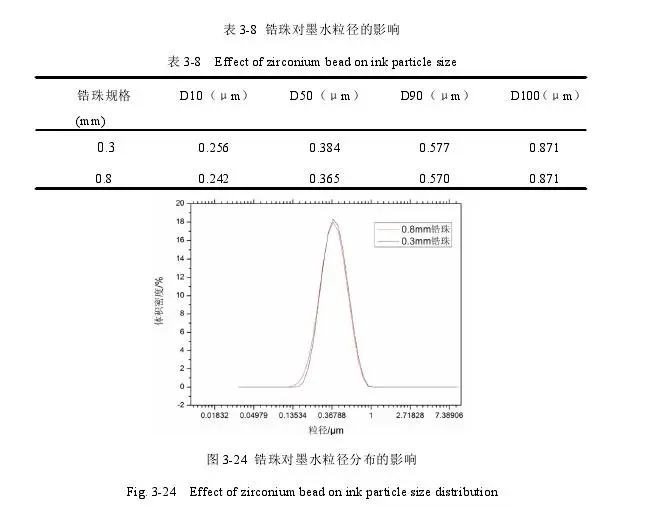
Figures 3-25 and 3-26 indicate that, under the same conditions, ceramic inks prepared by grinding to D100=0.871μm with 0.3mm and 0.8mm zirconia beads exhibit similar viscosity and surface tension values.
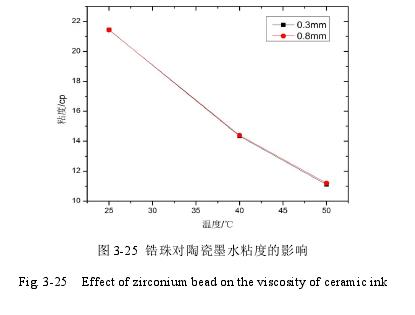
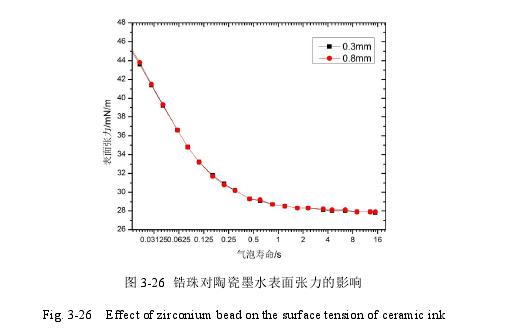
From Figure 3-27, it is evident that when grinding to the required D100=0.871μm, the shape and particle size distribution of ceramic ink particles prepared using 0.3mm and 0.8mm zirconia beads are quite similar. Combining the colorimetric data in Table 3-9 with the color charts in Figure 3-28, it can be inferred that the coloration results between the two are nearly identical.
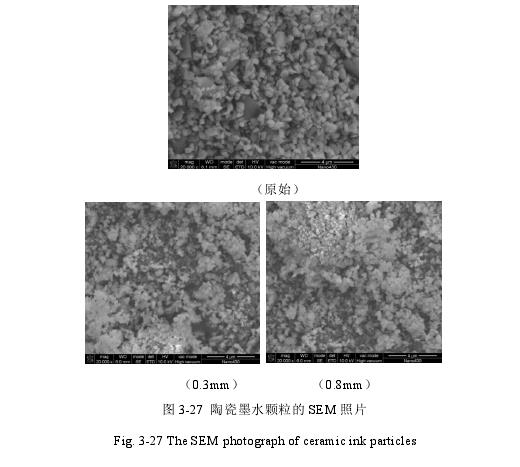
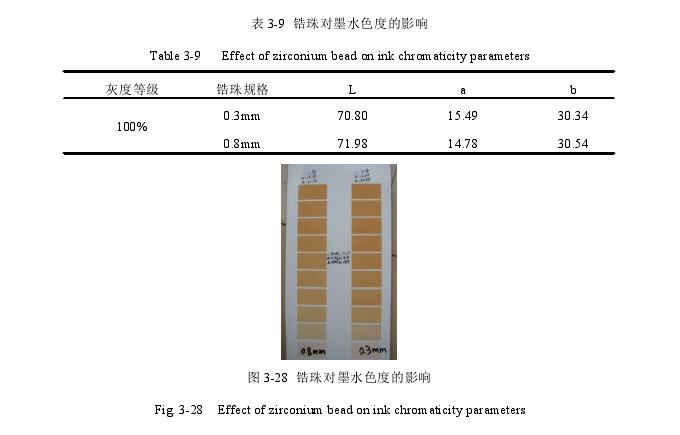

Submit your demand,
we will contact you ASAP.

Sanxin New Materials Co., Ltd. focus on producing and selling ceramic beads and parts such as grinding media, blasting beads, bearing ball, structure part, ceramic wear-resistant liners, Nanoparticles Nano Powder

